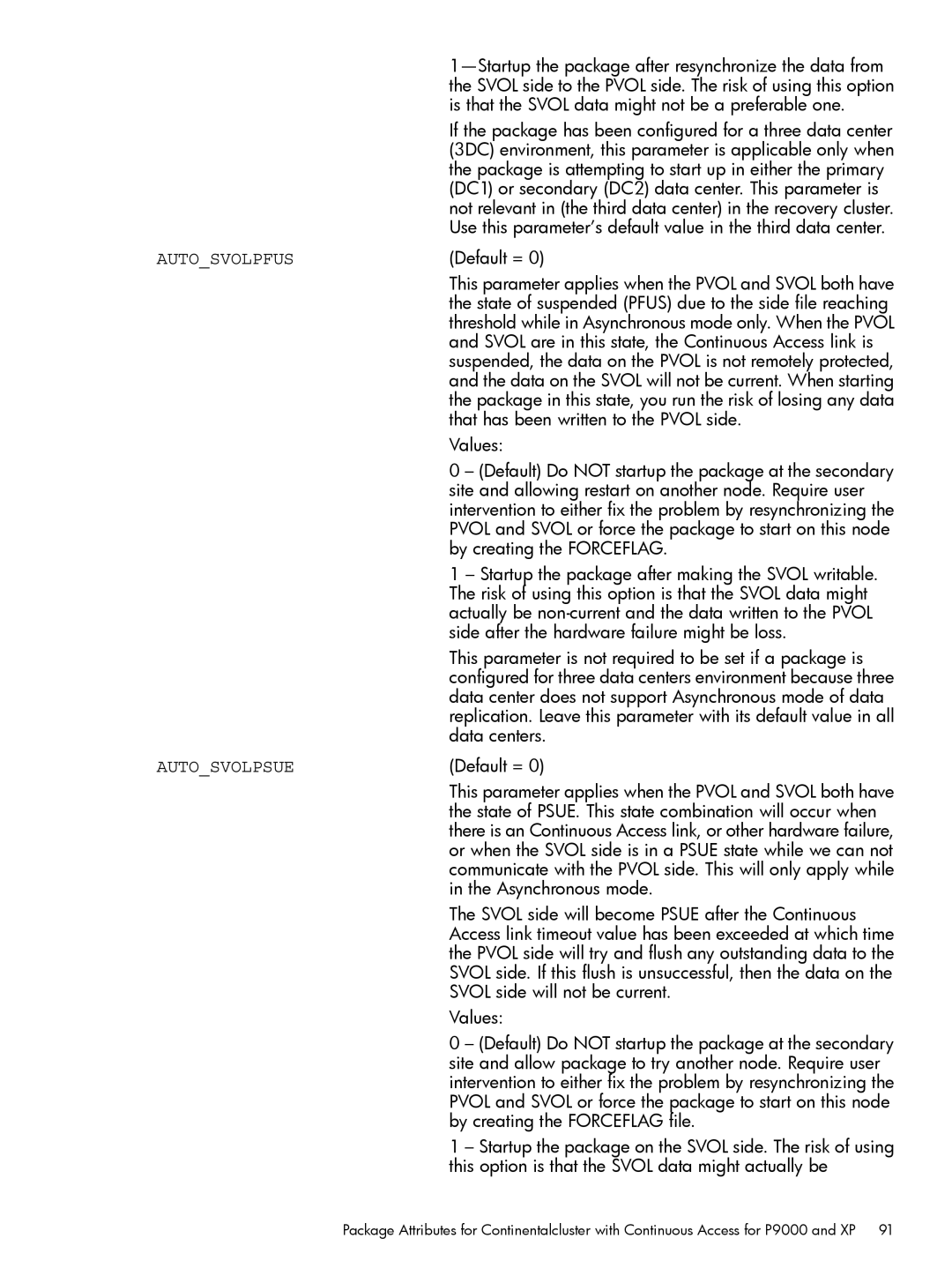| |
| the SVOL side to the PVOL side. The risk of using this option |
| is that the SVOL data might not be a preferable one. |
| If the package has been configured for a three data center |
| (3DC) environment, this parameter is applicable only when |
| the package is attempting to start up in either the primary |
| (DC1) or secondary (DC2) data center. This parameter is |
| not relevant in (the third data center) in the recovery cluster. |
| Use this parameter’s default value in the third data center. |
AUTO_SVOLPFUS | (Default = 0) |
| This parameter applies when the PVOL and SVOL both have |
| the state of suspended (PFUS) due to the side file reaching |
| threshold while in Asynchronous mode only. When the PVOL |
| and SVOL are in this state, the Continuous Access link is |
| suspended, the data on the PVOL is not remotely protected, |
| and the data on the SVOL will not be current. When starting |
| the package in this state, you run the risk of losing any data |
| that has been written to the PVOL side. |
| Values: |
| 0 – (Default) Do NOT startup the package at the secondary |
| site and allowing restart on another node. Require user |
| intervention to either fix the problem by resynchronizing the |
| PVOL and SVOL or force the package to start on this node |
| by creating the FORCEFLAG. |
| 1 – Startup the package after making the SVOL writable. |
| The risk of using this option is that the SVOL data might |
| actually be |
| side after the hardware failure might be loss. |
| This parameter is not required to be set if a package is |
| configured for three data centers environment because three |
| data center does not support Asynchronous mode of data |
| replication. Leave this parameter with its default value in all |
| data centers. |
AUTO_SVOLPSUE | (Default = 0) |
| This parameter applies when the PVOL and SVOL both have |
| the state of PSUE. This state combination will occur when |
| there is an Continuous Access link, or other hardware failure, |
| or when the SVOL side is in a PSUE state while we can not |
| communicate with the PVOL side. This will only apply while |
| in the Asynchronous mode. |
| The SVOL side will become PSUE after the Continuous |
| Access link timeout value has been exceeded at which time |
| the PVOL side will try and flush any outstanding data to the |
| SVOL side. If this flush is unsuccessful, then the data on the |
| SVOL side will not be current. |
| Values: |
| 0 – (Default) Do NOT startup the package at the secondary |
| site and allow package to try another node. Require user |
| intervention to either fix the problem by resynchronizing the |
| PVOL and SVOL or force the package to start on this node |
| by creating the FORCEFLAG file. |
| 1 – Startup the package on the SVOL side. The risk of using |
| this option is that the SVOL data might actually be |
Package Attributes for Continentalcluster with Continuous Access for P9000 and XP 91
